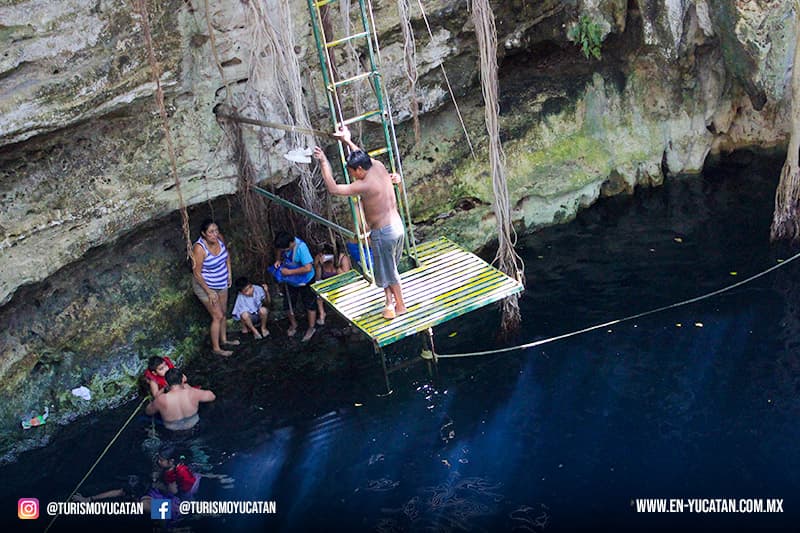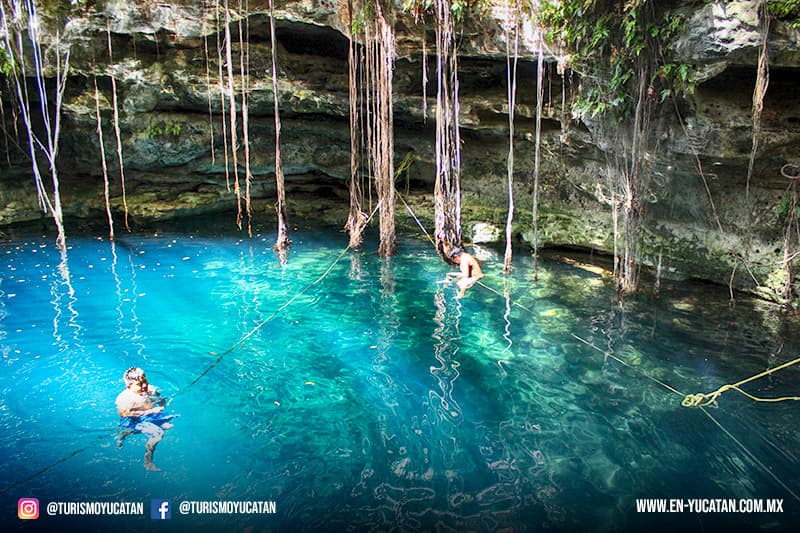Yaxunah is located within a unique landscape found in the Yucatan Peninsula and contains at least seven cenotes, as well as multiple caves and rejolladas. The surface of Yucatán consists of a large slab of marine limestone formed during the Cenozoic period and contains extensive Karst features. Since the Yucatan Peninsula has almost no rivers or lakes, the kars, or karst soil provides almost all natural access to groundwater.
The cool and clear water of Cenote Lol Ha creates a beautiful refuge in the middle of Yaxunah. The black earth of the cenotes supports a great variety of plants that require a more humid and dark environment. For example the “mata palo” often grows near the edge of the cenote with its long waffle-like roots reaching up to the water level. A wide variety of birds such as owls, swallows and the tho bird live in the large trees nearby or in the cenote. In addition squirrels, raccoons, armadillos and iguanas also inhabit the areas around the cenotes.

This cenote is very beautiful and charming, ideal for a bath after touring the archaeological zone of Chichen Itzá or Yaxunah, the walls of this cenote are steep and sharp and extend to a pool of water with a depth of 8.40 meters in the west and 16.24 m in the east.
Those who enter the cenote should be very careful when descending the ladder since it is vertical, and the base has an area of about 2 square meters, it is also recommended to use a life jacket at all times, regardless of whether you know how to swim or not. It is better to take your precautions, in the water mirror of the cenote there are several safety ropes.
